After mass shooting, Las Vegas police decide which deaths count
When the dead were counted after the October 2017 massacre, Las Vegas faced a grim reality: With 58 victims, the city had experienced the worst mass shooting in modern American history.
For many, the number 58 would come to symbolize a community’s strength and resilience in the face of tragedy. And for more than two years, the death toll of the Route 91 Harvest festival shooting remained unchanged.
But in the last year, two survivors — Kimberly Gervais of Mira Loma, California, and Samanta Arjune of Las Vegas — suffered what law enforcement officials call a “delayed death.”
Gervais, 57, died on Nov. 15 at a hospital in Redlands, California. Arjune’s death came a half year later, on May 26, at Southern Hills Hospital and Medical Center in Las Vegas. She was 46.

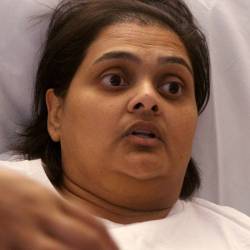
Medical examiners have ruled both deaths homicides, yet the Metropolitan Police Department will not increase the mass shooting’s official death toll — a decision that poses a unique set of challenges for the grieving families and raises questions about how Las Vegas police could handle any future delayed deaths tied to the shooting.
“To me, Metro’s decision is harsh and isolating and painful, because they’re not even acknowledging my mom,” Amber Manka, Gervais’ older daughter, said during an exclusive interview with the Las Vegas Review-Journal ahead of the shooting’s third anniversary.
Whether Gervais and Arjune will be included in Metro’s local homicide statistics is unclear. The initial 58 victims were omitted from the department’s 2017 homicide count.
Neither Clark County Sheriff Joe Lombardo nor the department has provided a public explanation for its decision regarding the death toll. A request for an interview with Lombardo was denied.
 Kimberly Gervais is pictured at a spinal rehabilitation center in Southern California about two weeks after the Oct. 1, 2017, massacre in Las Vegas. Gervais died from her injuries in November 2019. (Amber Manka)
Kimberly Gervais is pictured at a spinal rehabilitation center in Southern California about two weeks after the Oct. 1, 2017, massacre in Las Vegas. Gervais died from her injuries in November 2019. (Amber Manka) 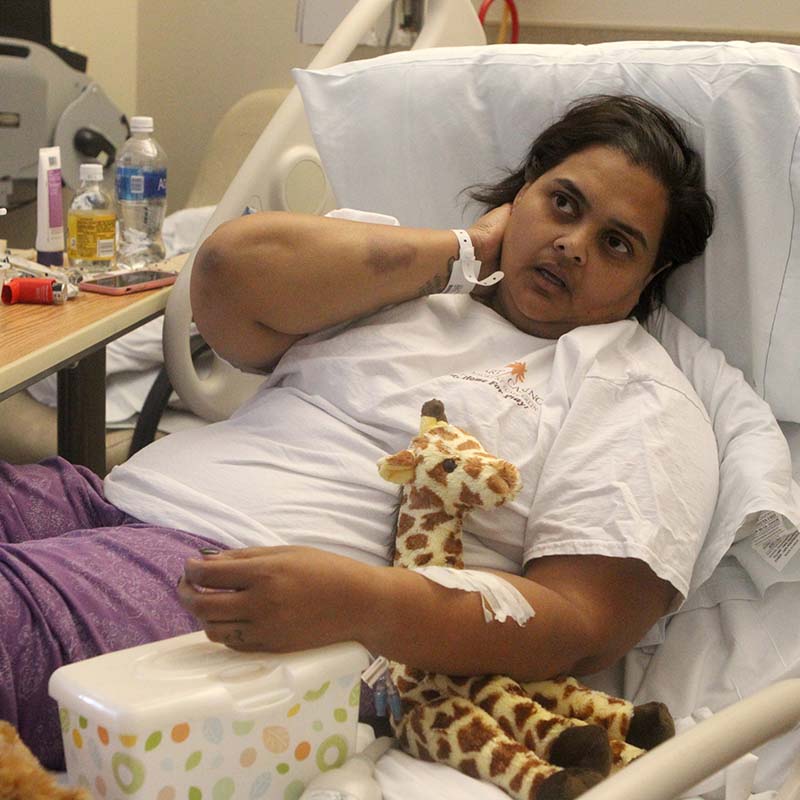 Samanta Arjune, pictured at University Medical Center a week after the 2017 mass shooting in Las Vegas, survived more than two years before her death in May. She is the 60th known victim of the shooting. (K.M. Cannon Las Vegas Review-Journal @KMCannonPhoto)
Samanta Arjune, pictured at University Medical Center a week after the 2017 mass shooting in Las Vegas, survived more than two years before her death in May. She is the 60th known victim of the shooting. (K.M. Cannon Las Vegas Review-Journal @KMCannonPhoto) The shooting
Shortly after 10 p.m. on Oct. 1, 2017, Jason Aldean, the festival’s closing act, approached the microphone to perform his final song of the night: “When She Says Baby.”
The song begins, “Some days it’s tough just getting up, throwing on these boots and making that climb.”
Before Aldean could finish the first verse, a distinct popping noise overpowered the country music star and his live band. Aldean rushed off the stage, and chaos erupted.
Near the back of the crowd of more than 22,000 concertgoers, Gervais suddenly dropped to the ground. A bullet had lodged in her C7 vertebra, and shrapnel scattered from shoulder to shoulder. She was left quadriplegic.
Nearby, Arjune was struck by a single bullet in her left calf. She collapsed as she sprinted hand in hand with her brother, Malcolm Bissember. The bones in her leg had shattered.
“I’ve got to learn to walk all over again, but I’m lucky,” Arjune said a week after the shooting in a bedside interview with the Review-Journal at University Medical Center. “Think of all those poor people who died.”
Gervais and Arjune might not have ever crossed paths that night, but now, three years after the shooting that changed their lives, their stories intertwine.
Both women would be ferried to safety with the help of strangers. Both would live through two shooting anniversaries, spending much of their time in and out of hospitals and treatment centers until their deaths. Neither will be recognized as official victims by Metro, the lead investigating agency.
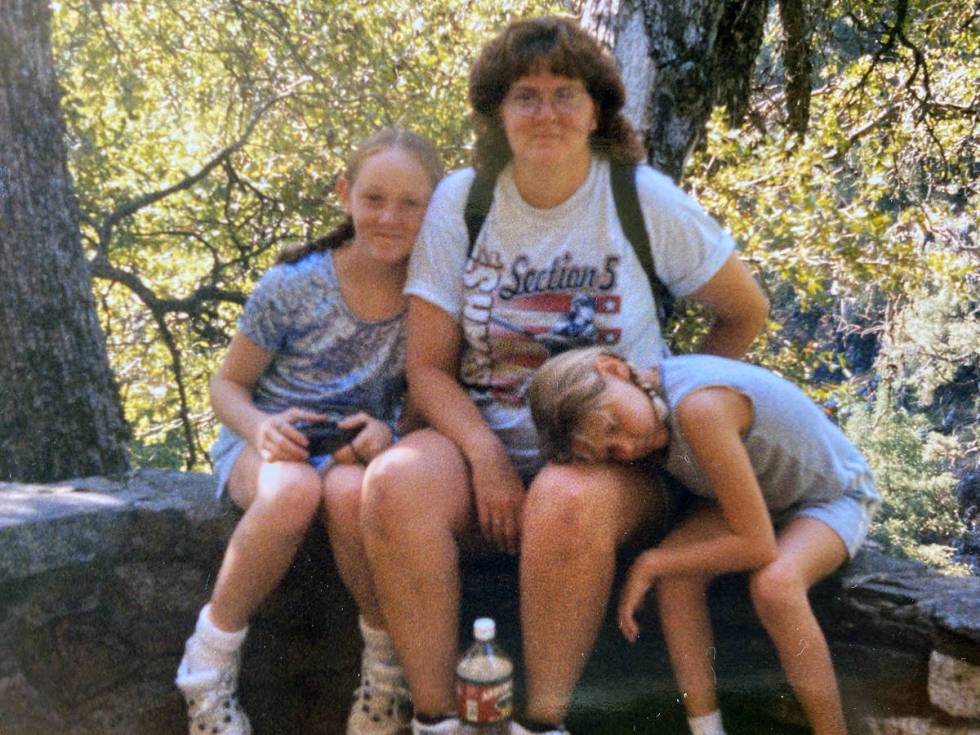
Gray area
At the time of Gervais’ death — which marked the first known death of a Route 91 survivor from injuries directly tied to the shooting — Metro said any changes to the victim count would be dependent on the woman’s official cause and manner of death.
And then nine months came and went before, finally, in August, the coroner’s division of the San Bernardino County Sheriff’s Department determined that Gervais had died from complications of the spinal injuries she had suffered in the mass shooting.
“In a general sense, when we’re looking at remote gunshot wound cases, there are typically other intervening medical problems that can complicate the actual cause of death,” said supervising deputy coroner investigator Mike Sutcliffe. “So even though there were a bunch of other injuries and conditions, none of those things would have occurred if not for the original injury.”
What happened during that nine-month window to lead Metro to reverse course on the death toll is unclear.
Some criminologists say a delayed death tied to a mass killing is a gray area, because there is no universally accepted procedure in place to handle such cases.
“I don’t know if there is a right or wrong way to address this,” said Bryce Peterson, an Urban Institute researcher whose expertise includes federal and state justice statistics.
But law enforcement authorities outside Nevada say they plan to take a different approach, and community leaders in Las Vegas have chosen to recognize Gervais and Arjune as official Route 91 victims.
As the Las Vegas Review-Journal continues to cover the long-term aftermath of the Route 91 Harvest festival massacre, the newspaper will report that 60 people died in the shooting.
That number includes the two victims who died from their injuries in the past year, although the Metropolitan Police Department has chosen not to include them in the official death toll.
“These women died as a direct result of the gunshot wounds they sustained on Oct. 1, 2017,” Review-Journal Executive Editor Glenn Cook said. “Coroners ruled their deaths homicides. The fact that Kimberly Gervais and Samanta Arjune survived — and suffered — for more than two years with their injuries shouldn’t exclude them from the list of victims. Today, the Review-Journal can report with authority that 60 people were killed in that shooting, not 58.”
‘No difference in our eyes’
In Aurora, Colorado, where a gunman killed 12 people and wounded dozens more in 2012 inside a movie theater, police officials will increase the death toll should a delayed death of a survivor occur — no matter how much time has passed since the shooting, said Faith Goodrich, a spokesperson for the Aurora Police Department.
“If the death was directly related to the theater shooting, even long after the fact, and we were made aware, it would be added to our UCR statistics since the case originated within our jurisdiction,” Goodrich said, referring to the FBI’s Universal Crime Reporting program, which tracks crime trends nationwide.
And despite Metro’s decision, the families of Gervais and Arjune are entitled to the same benefits as the families of the original 58 victims — from both the Vegas Strong Resiliency Center and a probate case that would equally split the Las Vegas gunman’s estimated $1 million estate among the families of the victims.
“There’s no difference in our eyes. Neither is greater or less than, but just different,” said Tennille Pereira, director of the Resiliency Center and a board member of a committee appointed to create a memorial site for the shooting. “The Resiliency Center serves anyone impacted by 1 October, and depending on the way they were impacted determines the benefits they receive. Anyone who was declared to have died from their injuries by the coroner is entitled to the benefits of a bereaved family. It’s a factual matter.”
Delayed by the COVID-19 pandemic, the committee still is in its early stages of planning. But Pereira said the committee’s hope is that the memorial, in whatever shape or form it takes, “honors the community, the survivors and the families who have been impacted.”
Meanwhile, a status hearing is set for February in the probate case, which has been in limbo since July, when the company that manufactured the bump stock used by the gunman filed a creditor’s claim against the estate.
Still, Las Vegas probate attorney Alice Denton said, “If the coroner says someone is a victim, then they are a victim, and they would be eligible for a portion of the estate.”
The gunman killed himself after opening fire on the festival crowd from his 32nd-floor suite at Mandalay Bay.
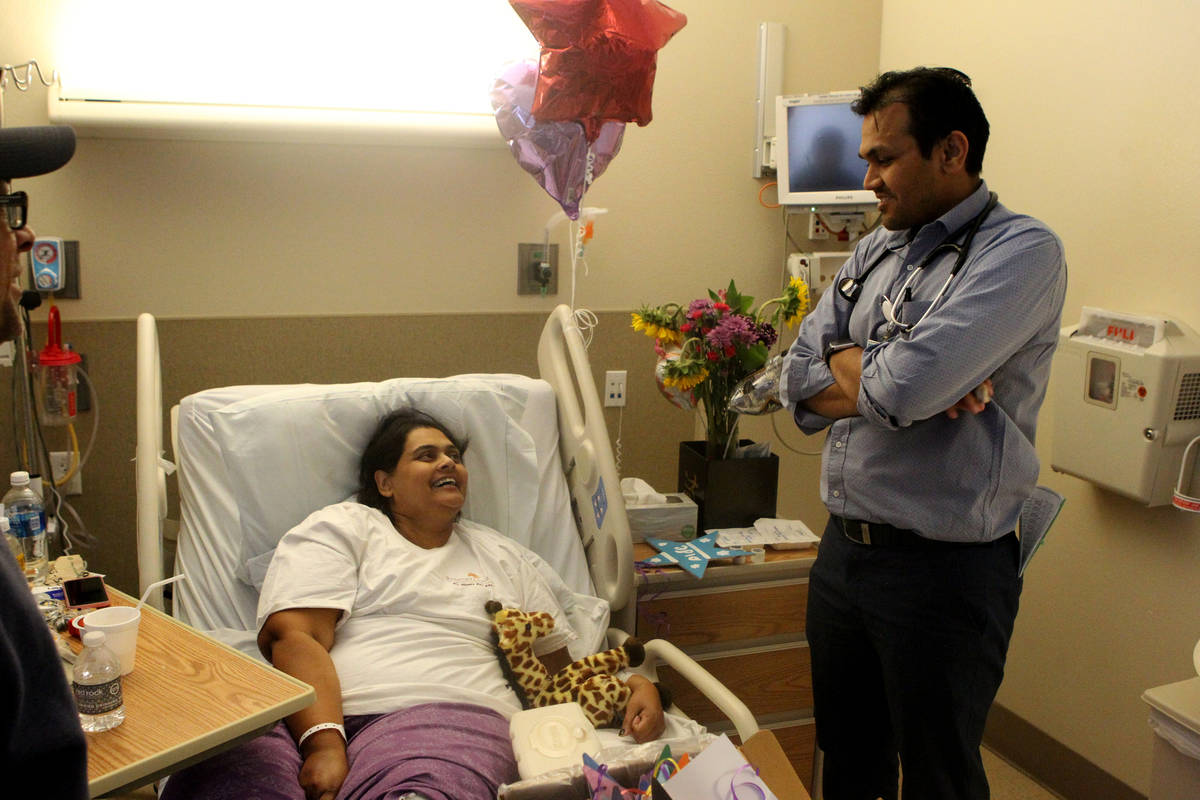
‘Pain and pain and pain’
Arjune was buried in Las Vegas on May 31. During the service, her father, Rudolph, said matter-of-factly, “She suffered and suffered with pain and pain and pain.”
The morning after the shooting, doctors at University Medical Center performed exploratory surgery and found that the bullet in Arjune’s leg, entwined in nerves, could not be removed. But the bullet eventually resurfaced on its own, causing extreme pain for Arjune that was expected to last the rest of her life.
Her sister-in-law, Roxan Bissember, said Arjune’s death was immediately followed by a “trying time” for the family, during which several family members were hospitalized.
“It’s been really hard,” Bissember said in a brief phone call with the Review-Journal.
Some 240 miles away in Corona, California, Manka, too, continues to struggle with her grief.
Since learning of Metro’s decision, Manka often feels a sudden pang of uneasiness that borders on panic as the sun begins to set.
Her days are busy with the challenges of distance learning, cleaning and cooking for her family of four — a schedule that keeps her distracted. Numb, even. At least during the day.
But at night, alone with her thoughts, Manka lies awake for hours. She thinks about her mother’s infectious laugh or the way she used to blast country music when she was upset. She tosses and turns, racking her brain for answers that Metro could provide, but hasn’t.
“Why isn’t she in the death toll? Why isn’t my mom good enough?” she wonders. “What’s the reason?”
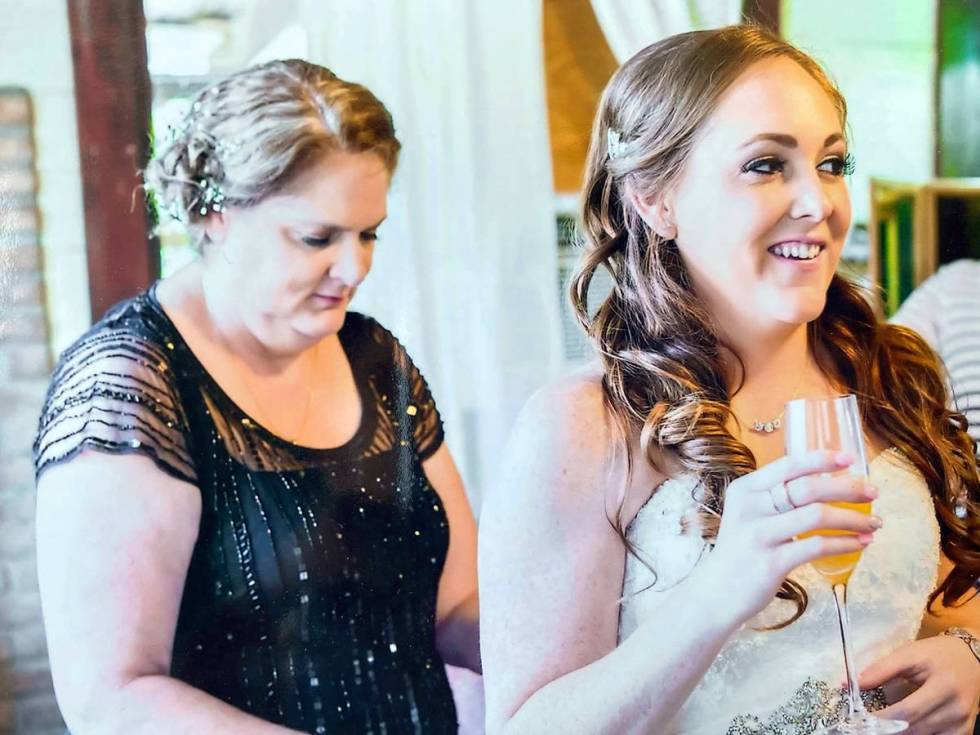
‘New wounds’
For nine months, while awaiting the coroner ruling, Manka felt isolated by the unknowns of her mother’s death. Did the gunshot wound kill her, or was there anything more she could have done to help her mom? Did she miss something? Will she be recognized as a Route 91 victim?
“Of course I want her to be remembered,” Manka said in an August interview in Corona. “But I’m very cautious of not wanting to harm the other 58 families in some way if they feel a certain way about it.”
So Manka had hoped the coroner ruling would bring closure. And it did — for a few hours.
“I feel like I can finally take a deep breath,” Manka said after learning that the coroner had ruled her mom’s death a homicide.
Metro’s decision came just hours later, and she said it introduced a world of hurt.
“This has opened up new wounds that I didn’t even know could exist,” Manka said. “Now I have to continue living with the ‘what ifs.’ ”
Faced with more tough decisions, this summer, Manka and her younger sister put their mother’s Mira Loma home on the market. And by late August, it had sold, forcing Manka to go through her mother’s belongings.
Inside her childhood home, Manka uncovered a few of Gervais’ original paintings — some of which were unfinished. And to Manka’s surprise, as uncertainty over the death toll mounted, she suddenly felt compelled to complete her mom’s paintings.
“It’s almost like I’m finishing a part of her story that was stolen from her,” she said.
In September, with a renewed connection to her mother through the paintings, Manka walked out of her childhood home for the last time. She did not look back.
NOTE: A previous version of this story incorrectly identified the Vegas Strong Resiliency Center.
Contact Rio Lacanlale at rlacanlale@reviewjournal.com or 702-383-0381. Follow @riolacanlale on Twitter.













